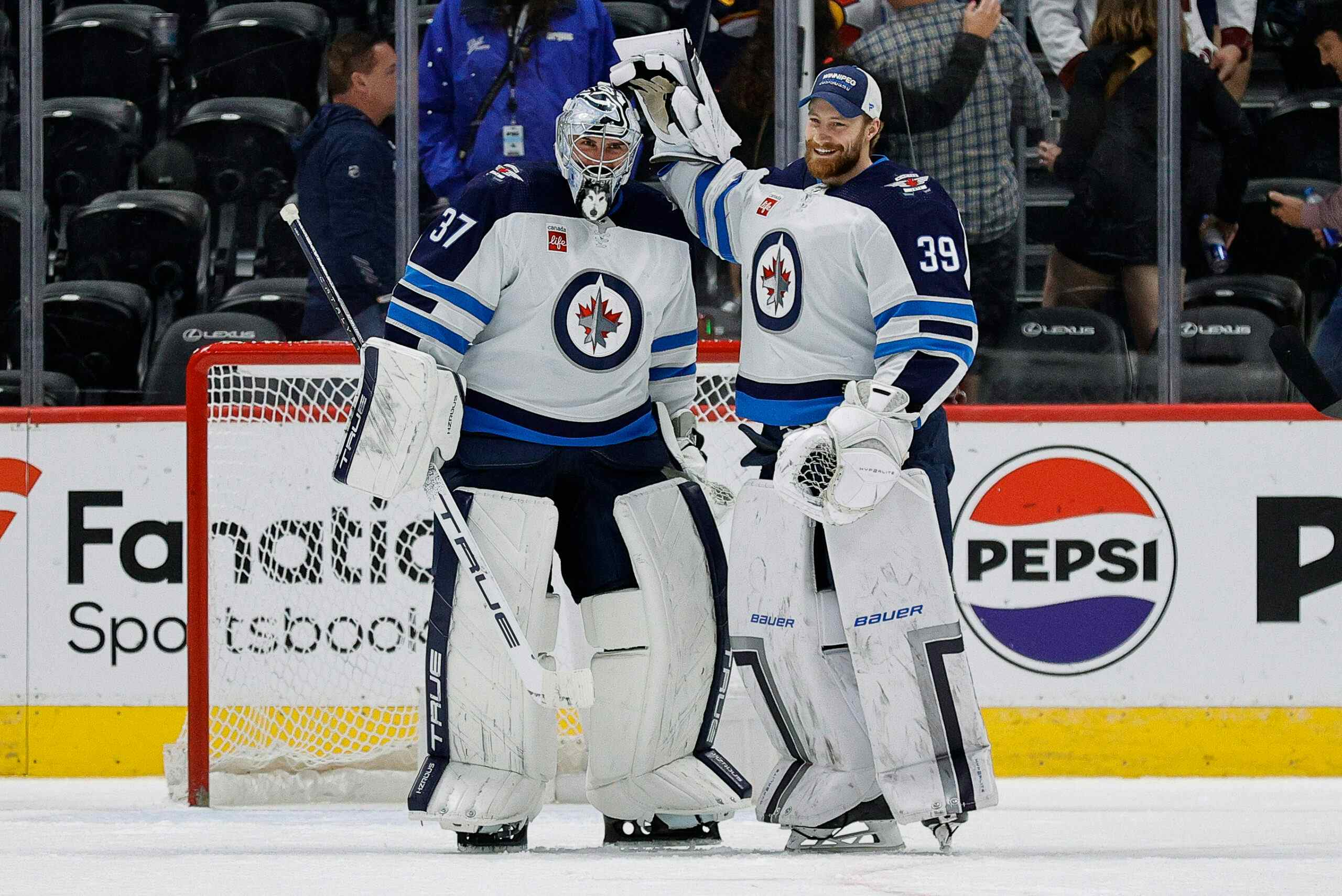The Best Year of Mark Stuart’s Career

Mark Stuart is a divisive figure on the Jets blue line. Many fans love his rough-and-tumble style. The coaching staff appreciate his work ethic. We can all enjoy the absurdly square dimensions of his cranium.
A select (and annoyingly vocal) few see him as a major liability to the club at 14 minutes per game, and a hilarious circus act at the 20+ he averaged under Paul Maurice. Playing alongside Jacob Trouba for much of the season, Stuart played more minutes per game this season than at any time in his career to date. By season end, he averaged 2 more minutes per game than he did just last season (a season of blue line injuries, devotees might remember).
Signed to a new four-year contract, Stuart seems poised to take a top-4 role in the Jets’ defence group moving forward. The pressing question – what can we expect? The terrifying answer – he may take a step back from his performance this season.
Inside we’ll weigh the possibilities.
The Best Year of Mark Stuart’s Career
That’s not a joke. Thanks to the extra minutes, Stuart produced more shots and penalty minutes (a marker of success in players of Stuart’s ilk) than any season previous, despite playing just 69 games. His 15-point pace would have been two behind his career high and he was +11 – also the second highest total of his career. If this were NBA Jam, Mark Stuart would be ON FIRE!
You savvy audience are surely rolling your eyes at +/- and points. “What are his PDO and corsi numbers, you dinosaur?”

This is a familiar chart for many, and in this case each circle is one season by Mark Stuart. The one in the top left is his most recent season, and each other bubble is a season past. The circles are orange when the player is a negative relative corsi player (the team has more shots against than for when Stuart is on the ice than when another player is on the ice). Mark Stuart is always a negative corsi player, as some argue defensive defenders should be. The higher up the chart the bubble is, the harder the competition he faced. The further the right, the more often he started in the offensive zone.
You can see the pattern. Until this year, Mark Stuart was always used as a third pairing defender who played other team’s 3rd and 4th lines, and didn’t start in his own end too often. He was always defending more often than attacking despite the easy assignment. This year, he played much tougher minutes with many more defensive starts and managed just the third worst Relcorsi season of his career. Given the circumstances, this was quite literally the best season of his career.
His PDO (a rating of luck by adding on-ice save % to on-ice shooting %) was 101.1 on a team with a collective 99.4. Considering the problems in goal for the Jets and our expectations given his frequent defending, it’s a bit a fortunate season, but not wildly so.
So what’s the problem?
Well, players rarely get significantly better in the middle of January after turning 30.
We can give praise to Trouba, perhaps, though he too was defending more often than attacking, despite what our eyes told us. We can say that Paul Maurice made all the difference, except that Stuart is still spending a lot of time in his own end and makes breakout passes like he’s playing pool, jabbing at the puck with his stick always in front of him. Maybe his plus/minus survived because of a touch of luck and Al Montoya – who brought the team’s collective save percentage to its highest level in Jets 2.0 history. Whatever the case, the above chart tells us that Stuart didn’t develop into a top-4 defender. He got put there and still struggled, just less than we expected.
A Sign of Things to Come?
For the pessimists, this is a clear sign of regression. A few more goals will get by him, he’ll run around a little more aggressively, a few more will go in, and we can hope that he’s back on the third pairing by December 2014 to limit the damage.
For others, that he took on a tougher assignment may be a sign that he’s ready for more of the same. Mark Stuart has arrived, some might proclaim.
The challenge is always the balance of evidence. No one can say he doesn’t relish contact. At the same time, no one can claim his defensive gap work is NHL quality or that he handles the puck with patience and precision. Your mileage may vary on how his skill set impacts the game, and I’ve had my say here.
What do you think? Is Mark Stuart a legitimate top-4 defender in the Central Division?
Recent articles from Kevin McCartney





